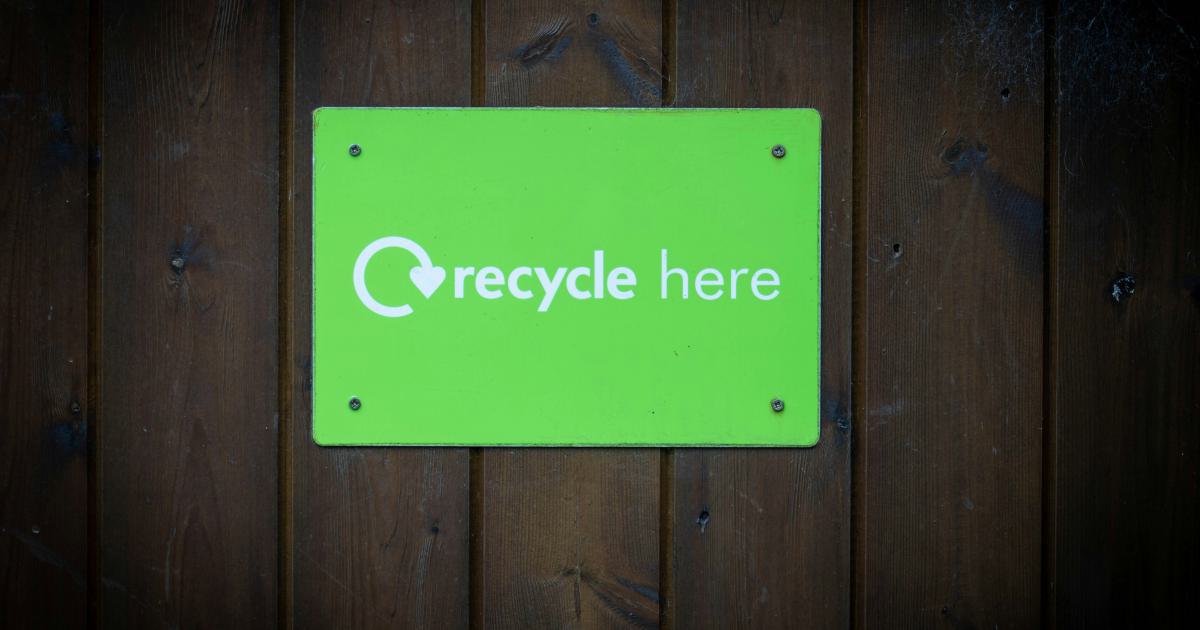10 Surefire Methods for an Engaging Content Recycling Strategy


Introduction: The Power of Content Recycling
Content recycling is a strategic approach to maximizing the value of your existing content by repurposing and reusing it in various formats. In today's digital landscape, where attention is scarce and competition is fierce, an effective content recycling strategy can be a game-changer for your business or personal brand.
By repurposing your content, you can reach new audiences, boost your search engine visibility, and create a more cohesive and engaging content ecosystem. This article will explore 10 surefire methods for an engaging content recycling strategy that will help you get the most out of your content investments.
1. Repurpose Your Blog Posts into Videos

One of the most powerful ways to recycle your content is by turning your blog posts into engaging videos. Video content has become increasingly popular in recent years, with platforms like YouTube, Instagram, and TikTok attracting massive audiences.
By transforming your written content into video format, you can reach a whole new set of viewers who prefer consuming information through visual and audio mediums. Here's how you can do it:
Step 1: Identify your top-performing blog posts
Start by reviewing your website analytics to identify your most popular and well-performing blog posts. These posts are likely to resonate with your audience and can be excellent candidates for repurposing into videos.
Step 2: Create a video script
Use the existing blog post as a starting point to develop a video script. Condense the key points, add relevant visuals, and format the content for a more engaging video experience.
Step 3: Record and edit the video
Invest in quality video and audio equipment, or consider outsourcing the production to a professional video team. Edit the footage to ensure a polished, high-quality final product.
Step 4: Distribute the video
Upload the video to your website, YouTube channel, or other relevant social media platforms. Promote it through your existing communication channels to maximize visibility and engagement.
2. Transform Blog Posts into Infographics

Infographics are a highly shareable and visually appealing way to present complex information in a concise and engaging manner. By transforming your blog posts into infographics, you can make your content more accessible and memorable for your audience.
Step 1: Identify key takeaways
Review your blog post and identify the main points, statistics, and insights that can be effectively conveyed through an infographic.
Step 2: Design the infographic
Utilize user-friendly design tools or hire a graphic designer to create a visually striking infographic that clearly communicates the information from your blog post.
Step 3: Distribute the infographic
Share the infographic on your website, social media channels, and relevant online communities. Encourage your audience to share and engage with the content.
3. Develop Podcast Episodes from Blog Content

Podcasting has become a popular medium for consuming information and stories. By turning your blog posts into podcast episodes, you can reach a new audience of listeners who prefer the audio format.
Step 1: Select suitable blog posts
Review your blog content and identify posts that lend themselves well to the podcast format. Topics that are informative, engaging, and conversational tend to work best.
Step 2: Create a podcast script
Use the blog post as a starting point, but adapt the content to be more conversational and suitable for the audio format. Consider adding additional insights, anecdotes, or interviews to enhance the podcast episode.
Step 3: Record and edit the podcast
Invest in quality recording equipment and software to ensure high-audio quality. Edit the episode to remove any unnecessary pauses, repetitions, or distractions.
Step 4: Distribute the podcast
Upload the podcast episode to popular platforms like Spotify, Apple Podcasts, and Google Podcasts. Promote it through your existing communication channels and encourage listeners to subscribe and share the content.
4. Compile Blog Posts into eBooks or Whitepapers

Repurposing your blog content into more extensive and in-depth formats, such as eBooks or whitepapers, can be an effective way to provide your audience with valuable resources and establish your expertise.
Step 1: Identify related blog posts
Review your blog content and identify a series of posts that can be consolidated into a cohesive eBook or whitepaper.
Step 2: Organize and expand the content
Arrange the selected blog posts in a logical order, and expand on the content where necessary to create a more comprehensive and polished final product.
Step 3: Design the eBook or whitepaper
Hire a graphic designer or use a design tool to create a professional-looking eBook or whitepaper with a visually appealing layout and design.
Step 4: Distribute the eBook or whitepaper
Offer the eBook or whitepaper as a free download on your website, or consider selling it as a premium content offering. Promote it through your communication channels and encourage your audience to share it with their networks.
5. Create Bite-sized Content from Existing Material

In addition to repurposing your content into longer-form formats, you can also create bite-sized, easily shareable content from your existing material. This can include:
Social media posts
Extract key quotes, statistics, or insights from your blog posts and turn them into visually appealing social media posts for platforms like Twitter, Instagram, and LinkedIn.
Short videos
Take snippets from your longer-form video content and create shorter, more focused videos for platforms like TikTok and Instagram Reels.
Newsletters
Curate and summarize the highlights from your recent blog posts and other content in a concise newsletter that you can share with your email subscribers.
By breaking down your content into smaller, more digestible formats, you can increase its visibility, engagement, and shareability across various channels.
6. Revamp and Republish Evergreen Content

Evergreen content, which is content that remains relevant and valuable over an extended period, is an excellent candidate for recycling. By periodically reviewing and revamping your evergreen content, you can ensure it stays up-to-date and engaging for your audience.
Step 1: Identify your evergreen content
Analyze your website analytics to identify the blog posts, tutorials, or other content that consistently receive steady traffic and engagement over time.
Step 2: Update the content
Review the content and make any necessary updates to ensure the information is accurate, relevant, and aligned with current trends and best practices.
Step 3: Republish the content
Republish the updated content on your website, promoting it as a "refreshed" or "updated" version. This can help boost its visibility and appeal to both new and existing readers.
7. Curate and Repurpose User-Generated Content

User-generated content (UGC), such as customer reviews, social media posts, and testimonials, can be a valuable resource for your content recycling strategy. By repurposing and featuring UGC, you can build trust, showcase your audience's engagement, and create a more diverse and engaging content ecosystem.
Step 1: Identify relevant UGC
Regularly monitor your social media channels, customer feedback, and other online platforms to identify positive testimonials, product reviews, and user-generated content that aligns with your brand and messaging.
Step 2: Repurpose the UGC
Incorporate the selected UGC into your website, social media posts, or other marketing materials. This could include featuring customer reviews, showcasing user-generated images or videos, or highlighting positive social media mentions.
Step 3: Engage with your audience
Actively encourage and respond to user-generated content, fostering a sense of community and demonstrating your appreciation for your audience's contributions.
8. Adapt Content for Different Platforms and Formats

As you recycle your content, it's essential to adapt it to the specific requirements and best practices of different platforms and formats. This ensures that your content is optimized for each channel and resonates with your target audience.
Step 1: Identify platform-specific best practices
Research the optimal content length, formatting, and engagement strategies for each platform you plan to use, such as LinkedIn, Instagram, or your company blog.
Step 2: Tailor the content accordingly
Adjust the tone, language, and visual elements of your content to match the preferences and expectations of each platform. For example, a LinkedIn post may require a more professional tone, while an Instagram post may benefit from a more casual, visually-driven approach.
Step 3: Experiment and iterate
Monitor the performance of your repurposed content on different platforms and continuously refine your approach based on audience feedback and engagement metrics.
9. Leverage Content Bundling and Gated Offers

Content bundling and gated offers can be powerful tools for your content recycling strategy. By packaging your content in a cohesive and valuable way, you can create a more engaging experience for your audience and potentially generate leads or revenue.
Step 1: Identify complementary content
Review your content portfolio and identify related blog posts, videos, infographics, or other resources that can be bundled together to create a more comprehensive and valuable offering.
Step 2: Develop the content bundle
Organize the selected content into a cohesive package, such as an eBook, webinar series, or content library. Consider adding exclusive or bonus materials to enhance the value proposition.
Step 3: Offer the content as a gated resource
Make the content bundle available as a gated offer, requiring users to provide their contact information (e.g., email address) in exchange for access. This can help you generate leads and build your email list.
Step 4: Promote the gated offer
Actively promote the content bundle through your website, social media channels, and other marketing channels. Encourage your audience to share the offer with their networks.
10. Collaborate with Industry Influencers and Experts

Collaborating with industry influencers, experts, and complementary brands can be an effective way to expand the reach and impact of your recycled content.
Step 1: Identify potential collaborators
Research influential figures, thought leaders, and brands within your industry that align with your brand and target audience.
Step 2: Propose a collaboration
Reach out to your potential collaborators and pitch ideas for how you can work together to create and promote content. This could include guest blog posts, co-created videos or podcasts, or cross-promotional activities.
Step 3: Co-create and promote the content
Develop the collaborative content, ensuring it provides value to both audiences. Actively promote the content through your respective channels to maximize visibility and engagement.
Conclusion: Embrace the Power of Content Recycling
By implementing these 10 surefire methods for an engaging content recycling strategy, you can unlock the full potential of your existing content and create a more cohesive, efficient, and impactful content ecosystem. Remember, the key to successful content recycling is to approach it strategically, focus on delivering value to your audience, and continuously experiment and iterate to find the most effective approaches for your business or brand.